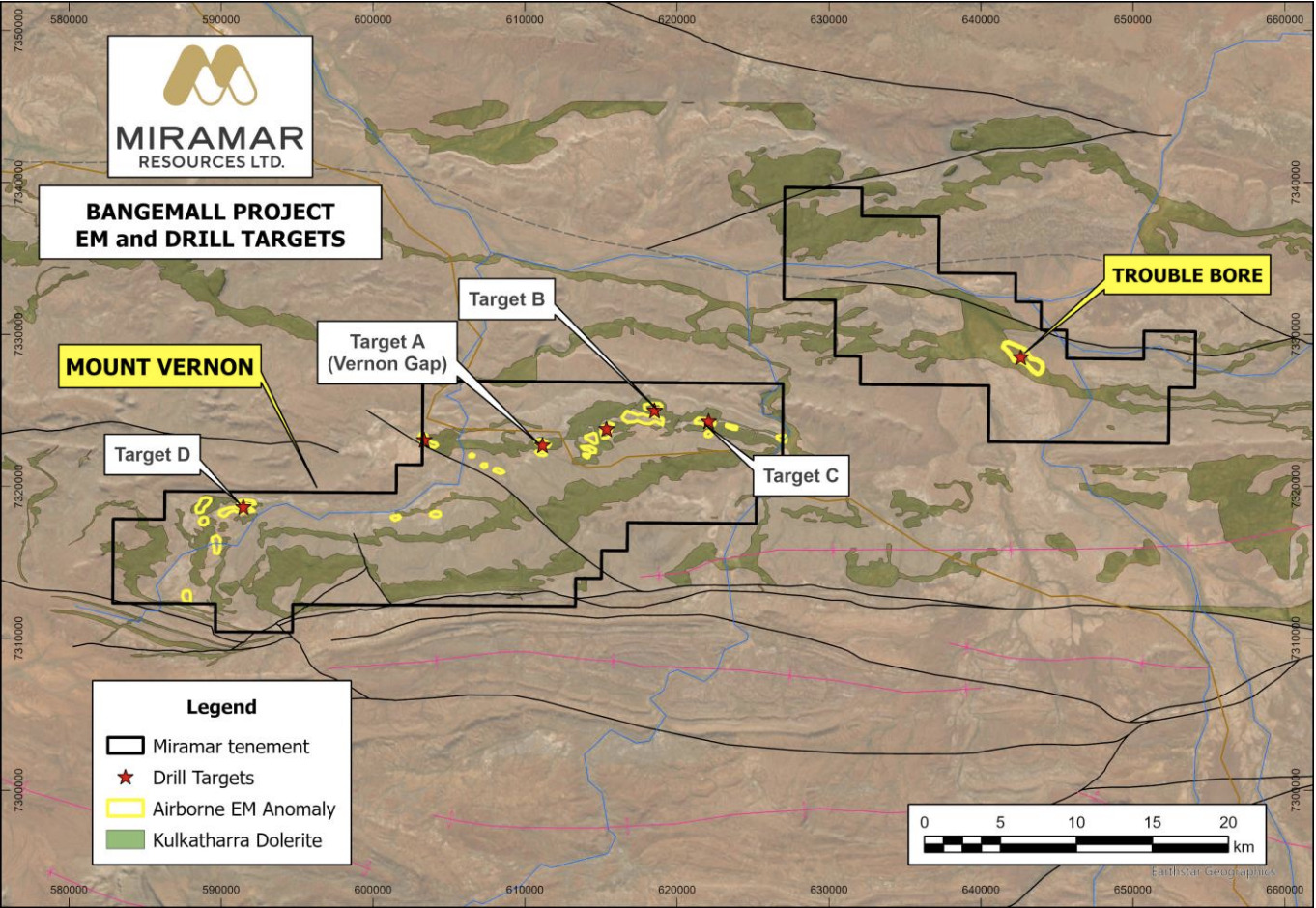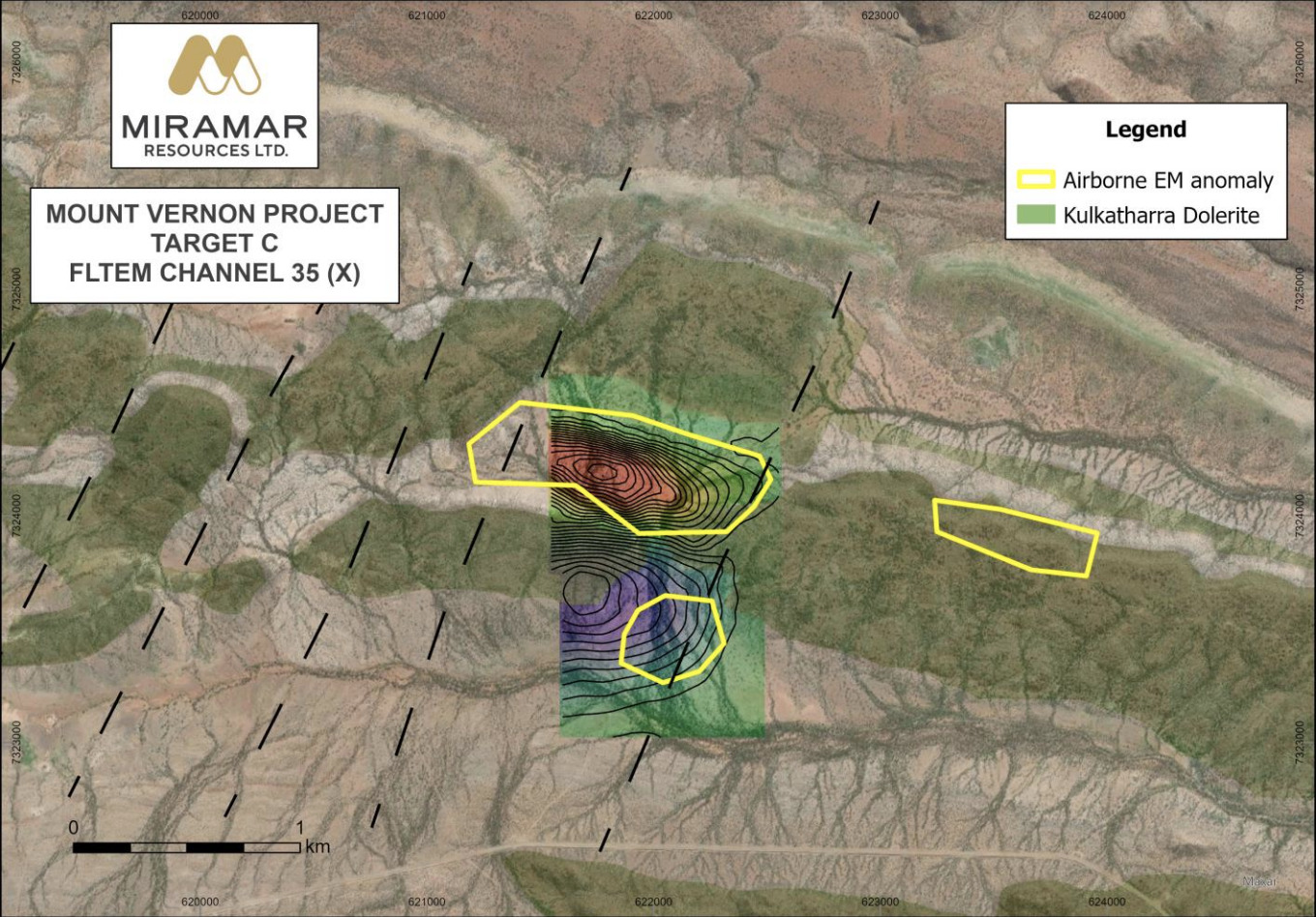Miramar Resources gears up to drill potential Norilsk-style targets at its Bangemall nickel-copper-PGE project

Miramar Resources has its sights set on drilling at its Bangemall nickel-copper-PGE project by mid-year. Pic via Getty Images
- Strongest EM conductor identified to date at Mount Vernon, one of the key prospects at the Bangemall project
- Bangemall is said to have the potential to host the Norilsk-style nickel-copper-PGE mineralisation seen throughout Siberia but never before in WA
- Miramar Resources hopes to start drilling Mount Vernon and Trouble Bore by mid-2024
Special Report: Miramar Resources could be testing the emerging Mt Vernon and Trouble Bore targets with the drill bit by mid-year after identifying another set of strong electromagnetic (EM) conductors at its Bangemall nickel-copper-PGE project in WA’s Gascoyne region.
Miramar Resources (ASX:M2R) is exploring for intrusion-related nickel, copper and PGE mineralisation related to the 1,070 million year old Kulkatharra Dolerite sills, part of the Warakurna Large Igneous Province and the same age as the massive Nebo-Babel nickel-copper deposits being developed by BHP (ASX:BHP) in the West Musgrave region.
The company has stated its Bangemall tenements host the potential for Norilsk-style nickel-copper-PGE mineralisation typical of the giant deposits found throughout Siberia but never observed before in WA until perhaps now.

Strongest EM conductor seen to date
Geophysical surveying contractor Wireline Services Group has just completed a fixed-loop EM (FLTEM) survey over Target C – one of the key areas of interest at Mount Vernon – which showed a strong late-time EM anomaly where two dolerite sills are crosscut by several north-east trending faults.
Modelling of this data indicated a large, strongly conductive, shallow plate dipping towards the south-southeast, as well as a poorly-defined secondary anomaly located north of the main response.
The Target C anomaly is covered by recent sediments and is the strongest EM conductor seen to date at Mount Vernon, according to the company.
No previous drilling or geochemical sampling has been undertaken in the vicinity of this target.
The geophysical crew has now moved over to Target D, which will be the final airborne anomaly to best tested as part of this initial program.
M2R plans to conduct systematic rock chip sampling and mapping at Mount Vernon, including field checking of the various airborne and ground EM anomalies.
Following this, planning for a maiden drill program at both Mount Vernon and Trouble Bore will get underway.

A potential district-scale opportunity
M2R’s initial exploration goal is to show “proof of concept” of the Bangemall deposit model by confirming the presence of nickel-copper sulphide mineralisation.
A Program of Work (Pow) application for drilling at Trouble Bore has already been submitted, along with an Exploration Incentive Scheme (EIS) government co-funding application.
RC drill testing is tentatively scheduled for mid-2024.
M2R executive chairman Allan Kelly said the company looked forward to progressing to a maiden drilling campaign over what he believes is a potential district-scale opportunity at Bangemall.
“At Mount Vernon and Trouble Bore, we are seeing all the ingredients needed for the formation of a large-scale mafic intrusion-hosted nickel-copper PGE deposit such as Nova or Nebo-Babel,” he says.
“These types of deposits can be very large and very valuable due to the mix of metals present, which makes them mostly immune to short-term fluctuations in the nickel price.”
This article was developed in collaboration with Miramar Resources, a Stockhead advertiser at the time of publishing.
This article does not constitute financial product advice. You should consider obtaining independent advice before making any financial decisions.

UNLOCK INSIGHTS
Discover the untold stories of emerging ASX stocks.
Daily news and expert analysis, it's free to subscribe.
By proceeding, you confirm you understand that we handle personal information in accordance with our Privacy Policy.








